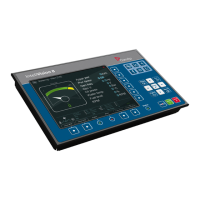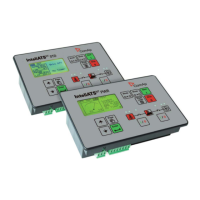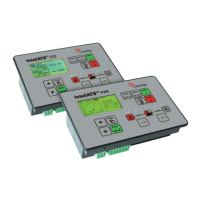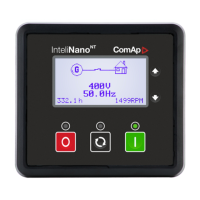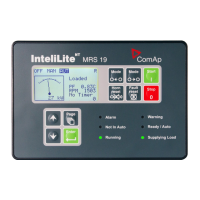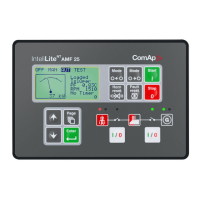6.11.8 Related binary outputs
1. System Ready
2. SystReserve OK
3. EnginesSwapped
6.11.9 Load Demand Swap
There is a new way of power management implemented (Efficient mode; LDS) since version IC-NT
2.0. Basic principles and functions are explained in the chapter below.
CAUTION!
MainsCompact
NT
is not supported for use with IC-NT 2.0+ firmware. Please use IC-NT 1.4.5 instead.
Principles of the Load Demand Swap (#PriorAutoSwap = EFFICENT)
To evaluate, which gen-set will start as next, two situations need to be distinguished:
1) First start (activation of Sys Start/Stop binary input)
2) Already running group of gen-sets
Add1) master controller (the one with the lowest CAN address) makes the calculation and sorts all
the gen-sets in the group based on their nominal power and running hours from the biggest to
smallest. Gen-set which fulfils following formula will be selected:
P
nom
< #LoadResStrt 1
Where P
nom
is the nominal power of the selected gen-set
If two gen-sets with the same nominal power are available, the one with least amount of run hours is
started.
Add2)
a) Master controller on the fly sorts available gen-sets based on their nominal power from the
biggest to smallest
b) If two or more gen-sets with the same nominal power are available, least amount of run hours is
preferred (lower run hours = higher priority)
c) Selection of which gen-set has to start next is from the bottom of the list to the top (small gen-
set starts first) following formula:
P
nom
> Load demand + #LoadResStrt 1
Where P
nom
is the nominal power of selected gen-set
d) If load demand is higher than nominal power of the biggest gen-set, this one is fixed and the
whole process repeats from c).
e) For gen-sets with the same nominal power also run hour equalization will be performed.
